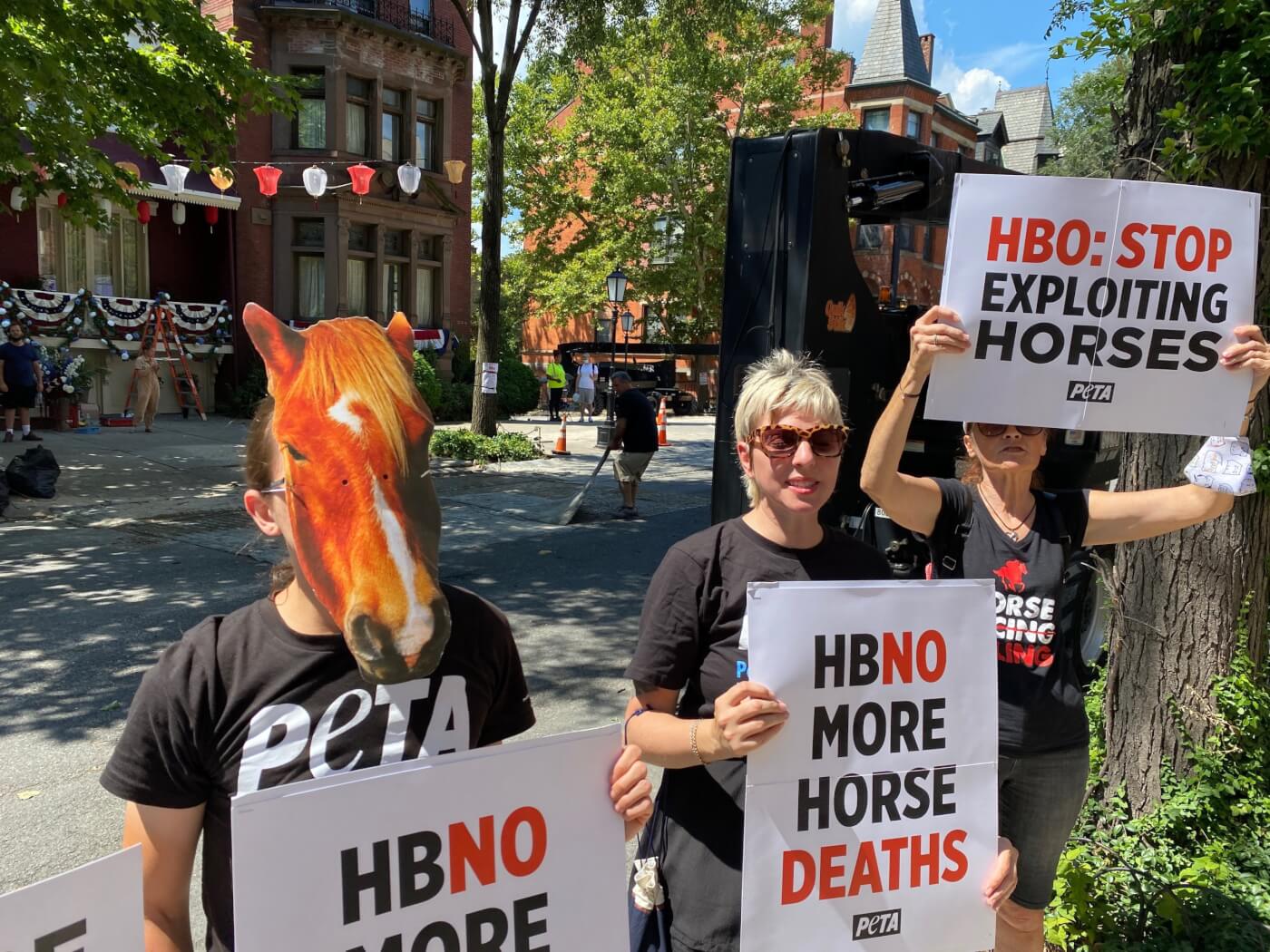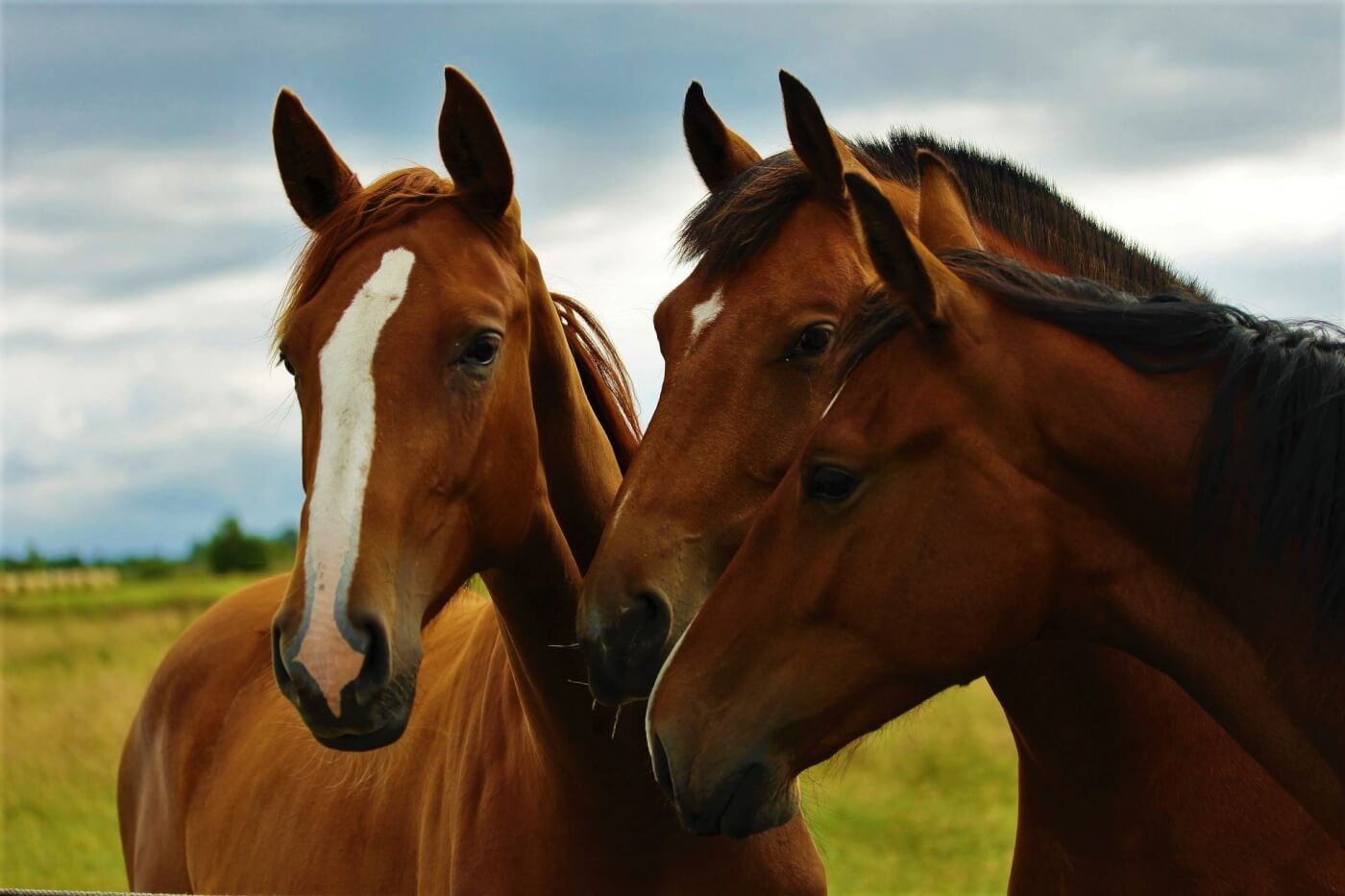Horses Are Suffering on Film and TV Sets—Tell the Industry to STOP Exploiting Them!
Horses are historically among the animals most commonly injured and killed when exploited for entertainment—and they’re the species about which PETA receives the most on-set whistleblower complaints. Although the film industry continues to use them in everything from Westerns to period dramas, horses are living, feeling individuals and no director should ever use them for film or TV productions.
Horses Continue to Suffer on Production Sets
As reported by TMZ, scorching summer heat and oppressive costumes are a dangerous mix for horses, who are naturally skittish animals, prone to flight and injury, and vulnerable to stress on a film set. That’s why PETA is calling “cut” on all animal action for Gladiator 2. We wrote to director Ridley Scott as far back as 2018, urging him not to use animals in the film, and most recently in July 2023, after a whistleblower report came in alleging that a horse’s leg had given out on set, presumably due to the heat. The letter describes how the horses—sometimes reportedly forced by Scott to stand in direct sunlight during and between takes—are at high risk of on-set injuries or even death.
PETA also sent letters to much of the film’s all-star cast, including Pedro Pascal, Denzel Washington, and Paul Mescal, asking them to urge Scott to stop turning animal suffering into a spectacle as the ancient Romans did and do their part to bring him into the 21st century.
In another case in which horses were exploited for entertainment, two horses hitched to a carriage crashed violently into a barrier at Film City in Mumbai. In the high-speed collision, the animals tumbled to the ground and were unable to get up. This awful, avoidable crash was doubtlessly traumatic for the horses and reportedly left at least one of them with a fracture. The incident happened on a Sobo Films set during a shoot of the drama series Ek Mahanayak: Dr. B. R. Ambedkar.
PETA India obtained footage of the crash from a whistleblower and is taking every avenue to make sure that those involved are held responsible, including by filing formal complaints with local police, the Animal Welfare Board of India, and Film City management.
This crash carries echoes of the horrific head-on collision of two horses on the set of Ponniyin Selvan in India in 2021 in which one was killed. PETA India joins us in “calling on all film and show makers to cut the cruelty and switch to modern, humane CGI and other visual-effects technology.”
On the set of Amazon Prime’s The Lord of the Rings: The Rings of Power, a horse suffered cardiac arrest and died.
Multiple whistleblowers spoke out when a horse died on the set of The Gilded Age, forcing HBO to release a public statement confirming that a horse had collapsed and died while pulling a carriage on set. Another whistleblower report about the show alleged that horses were being worked to the point of exhaustion.
During the filming of The Hobbit: An Unexpected Journey, whistleblowers reported multiple incidents of cruelty and neglect, including that horses had died after being injured on set, a horse had been tied up and left for three hours on the ground, goats and sheep had died from worm infestations, and animals had been trampled. Just before that, HBO canceled the horse racing series Luck, following the deaths of at least three horses.
The Power of the Dog made headlines for concerns about the production’s treatment of animals, which included a troubling scene in which a horse was clearly upset and frightened.
#PowerOfTheDog frightened horses and Benedict Cumberbatch reportedly actually learned to castrate bulls for his role in the film.
Never support productions that exploit animals. #Oscars pic.twitter.com/itZgeRKX9Y
— PETA (@peta) March 28, 2022
And yet another whistleblower complained about the treatment of horses on the set of a major blockbuster released in the summer of 2022 in which horses were reportedly made to work in extreme heat without adequate access to shade or other relief from the elements.
These issues, which occur with great frequency, are bound to continue in an industry that cares more about getting the “right shot” than considering the inherent rights of the animals it uses. That’s why PETA is calling on all producers to commit to making their projects without using real horses. If they can’t avoid exploiting animals for their projects, they should find a new medium, because no one wants to see a movie or TV show with torment as the theme.
Horses Suffer When Film and TV Productions Exploit Them
Domestic animals are no safer from the deprivation, cruelty, and dangers of the film industry than wild animals are. Horses, for example, are historically among the types of animals most commonly injured and killed on set. Flicka, American Outlaws, Simpatico, The Hobbit: An Unexpected Journey, and Luck are just a few of the productions in which horses have died.
Horses are extremely susceptible to injury and stress largely because they’re prey animals who are easily frightened, and film and TV sets are not natural environments for them—which is why it’s essential that filmmakers omit them from their productions.
What Can Films and TV Shows Do Better?
In such a creative industry, there are better ways to show animals in movies and TV shows without using them at all. Special tracks have been used in some films to help with horses’ footing, and breakaway ropes can be used to prevent tripping. But even with these precautions, animals can be hurt or killed. In War Horse, a horse died during transit despite precautions that were taken on set.
It’s time for Westerns, period pieces, and all films and shows to limit or remove the use of horses altogether. If productions can’t use humane and realistic CGI, mechanical rigs, and other humane alternatives, they should consider reworking their stories completely.
*****



